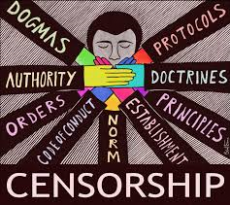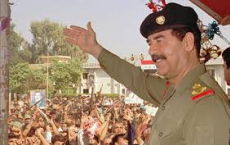
Email: ZYVC057@live.rhul.ac.uk
Total Article : 213
About Me:I'm a graduate student studying International Criminal Law and first started writing for King's News almost 4 years ago! My hobbies include reading, travelling and charity work. I cover many categories but my favourite articles to write are about mysteries of the ancient world, interesting places to visit, the Italian language and animals!

'Everything in the State, nothing outside the State, nothing against the State'. This is how Benito Mussolini, leader of the Italian Fascist Party during WW2, best described an authoritarian regime. Imagine if you lived with constant fear of disobeying the government’s rigid authority, imagine if you had no freedom of expression let alone freedom to rebel or protest, if you were conditioned to think in a certain way and any other views were considered treasonous. This is a typical day for many people living under an authoritarian regime.
These types of regimes rely on citizen’s blind obedience to the country’s leader or leading party and don’t allow any form of independent thought or individual freedom as it may go against the state. One of the most famous classes of authoritarian regimes is totalitarianism, a particular non-democratic regime tied to the twentieth century in which the political entity (be it the party in power or an individual) entirely controls the state and everyone in it. Authoritarian regimes typically have an official ideology, a single party led by one person, a terrorist secret police (like the Gestapo in Nazi Germany, Hitler’s own secret police force), monopoly over communications and partial or full control over the military which would then exercise legitimate violence.
Throughout history and at present authoritarian regimes assert their influence in many countries worldwide. There are different variations of authoritarian regimes which are reflected in the different strategies of obtaining a centric form of power in a nation, let’s take a closer look at how we can distinguish one authoritarian regime from another.
Military regimes:
In a military regime power is asserted by a group of officer holders therefore political and military authority tend to merge. Typically within this regime a leader comes to power through a coup d’état (a drastic action which results in removing the government in power illegally) and a group of soldiers decide to seize power. Some recent military regimes include Greece (1967-1974), Nigeria (1983-1993) and South Korea (1961-1987).

Single party regimes:
With single party regimes politics is dominated by one party which is usually ruled by a group of elites. China has been a single party regime since 1949 with the Communist Party and as such it has been subject to certain deprivations of human rights. It has also tried its best to exclude itself from global monitoring and is one of the only countries which does not give an official statistic for the number of executions due to the death penalty it has every year, although according to Amnesty International it is the country which commits the largest amount of executions in the world today.
Personalist regimes:
This is a particular type of regime where the power lies in the hands of one individual. It is a very common type of authoritarian regime consisting of one leader and thousands of supporters. It is said that undeveloped countries are more prone to this form of government as they lack necessary communicational means as well as the right to protest. Examples include Iraq (1979-2003) under the reign of Saddam Hussein, Spain (1939-1979) with Dictator Francisco Franco and Uganda (1971-1979) with political figure Idi Amin.
“Hybrid” regimes:
Hybrid regimes are a mixture of personalist, single party and military regimes; examples are Cuba under the dictatorship of Fidel Castro and North Korea under Kim.
Monarchical regimes:
Monarchical regimes occur when there is a hereditary ruling family in the country; this means political power is passed on from one generation to another and keeps the same blood line. A monarchical regime charcterised Ethiopia until 1974 and is still the form of government found in Saudi Arabia today.
Religious regimes:
Here the ultimate authority rests in the hands of religious leaders; a prime example is the case of Iran where religious authority dominates the political arena and indeed all affairs.
Can you think of anymore countries that either have been or are today under an authoritarian regime? If so comment below!
IMAGE 1: http://mirktma.files.wordpress.com/2013/01/censorship-logo-2-2kp6tg4.jpg?w=884&h=788
IMAGE 2 (Saddam Hussein): http://img2.wikia.nocookie.net/__cb20121024162458/uncyclopedia/images/8/88/Saddam-Hussein.jpg

0 Comment:
Be the first one to comment on this article.